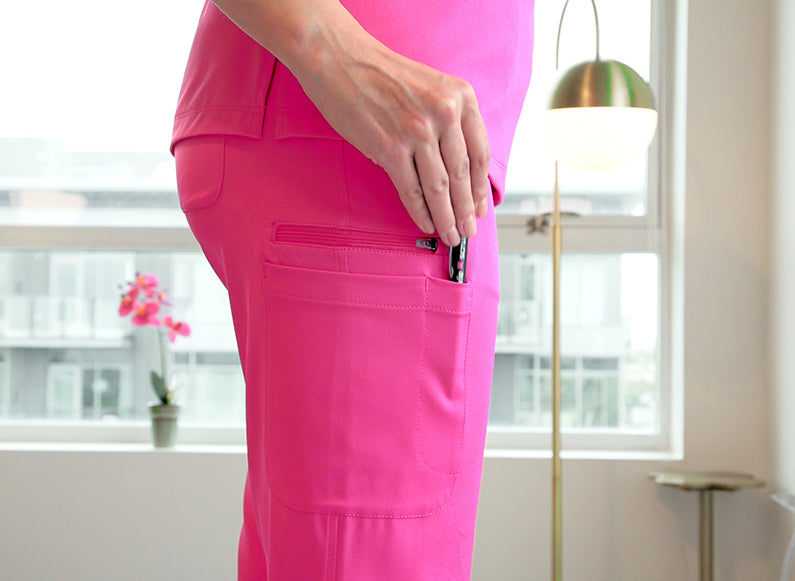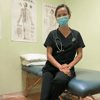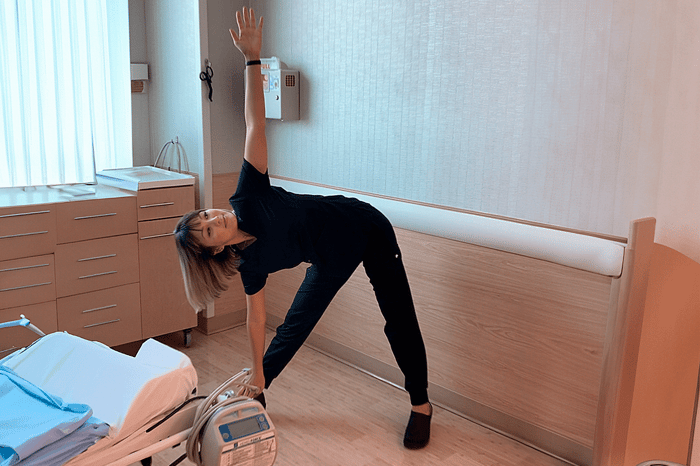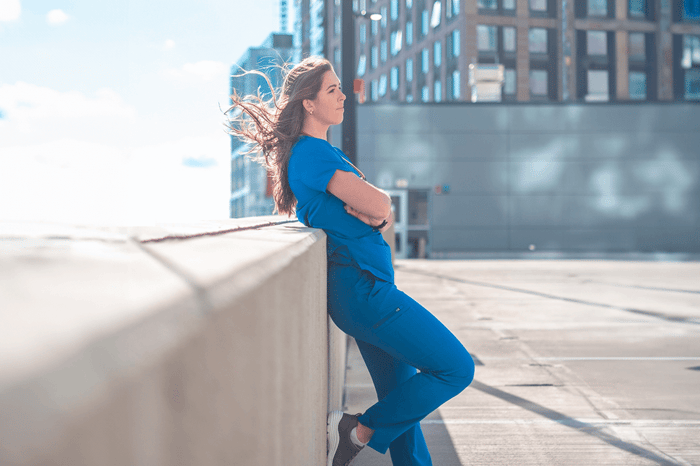Strategies for Balance from Asian Medicine
By Heather Vaughan, L.Ac, MSOM, C.Ay
With insurance plans from workers comp to Medicaid covering acupuncture for pain relief, Chinese and East Asian Medicine has hit the mainstream at last. You have likely heard about it as a great option for chronic pain, cancer treatment support, anxiety and sleep concerns, digestion, and more. I’m here, however, to share with you how acupuncture can help you make it through being a nurse (or any stressful profession) a little less scathed; including a toolbox of simple, easy, quick ways to support your own body and mind while navigating nursing. When applied consistently, these tools from Chinese Medicine and Ayurveda will help to stave off burnout, reduce the impact of stress on your body and mind, and allow you to live a more present life between shifts. You’re more than welcome to reach out to me with any questions you have, anytime. Enjoy!
How it Works
This 3000-year-old system of medicine was based largely on empirical evidence until the 1900s when the scientific method importance of research became the gold standard in the West for determining efficacy of treatment. There is now a massive body of evidence showing that Chinese medicine has tremendous benefit. But… how does it work? While meridian, yin-yang, and five element theories may not appear to have a relationship to Western anatomy and physiology, there are places they overlap, prove, and even enhance each other.
✈️ Your Ticket from Fight or Flight to Rest & Digest
I won’t go into the details of the functions of the sympathetic and parasympathetic nervous system since you are well aware. I will, however, share that there is a large body of evidence showing that acupuncture can act as a lever between the two. This is one way acupuncture initiates a return to health. When vagus nerve stimulation is neglected by an overstimulation of the sympathetic nervous system, all regeneration and repair are put on hold. Transitioning from parasympathetic to sympathetic is step one. It is a doorway, and without first opening the door, true repair and adrenal replenishment is nearly impossible. This is why many practitioners begin treatment with one of the points that initiates calm.
🧬 The Role of Neurotransmitters
The insertion of needles stimulates the release of a variety of neurotransmitters including enkephalin, endorphins, oxytocin, and possibly gammaaminobutyric acid (GABA) as a result of skilled and strategic needle insertion (Science Direct) depending on location, depth of insertion, and technique employed. Endorphins reduce pain. Dr. Tan’s Balance Method, for example, stimulates the release of XXX with deep needle insertion and strong stimulation near the bone. In this way, acupuncture stimulates a shift in chemical signaling to bring pain relief and relaxation.
🕸️ Meet The Interstitium
In 2023, Radiolab released an episode on the interstitium, bringing a new potential organ into awareness beyond the scientific community. I found out via a flurry of texts from thrilled colleagues who announced, “They discovered the San Jiao!” The interstitium, a proposed network consisting of “fluid-filled spaces in tissue that are connected throughout the body -- should be considered a new “organ” and that these spaces may play a major part in a lot of what goes on in your body. Experts have long thought parts of the body (like skin, veins and arteries, and the lining around muscles) contain walls of collagen, the main component of connective tissue. Instead, as the new study points out, those "walls" aren't walls at all. Instead, they're spaces filled with fluid that are simply supported by collagen. Those spaces are the interstitium.” (WebMD)
The interstitium expands and contracts, acting as a shock absorber for organs, allows lymph to move, and communication to pass to different areas of the body. This network, known as the San Jiao or Triple Burner in Chinese Medical Theory, is responsible for communication, metabolism of fluids, and a host of other important things. The main way to put it is that the San Jiao is the connector. It is, indeed, the interstitium and route by which acupuncture works. No matter the channel or point chosen, a message is sent and communicated through the interstitium. It explains a great deal about why we can affect one part of the body from another, an organ from a limb, the mind from the wrist, etc. My community of clinicians exploded with excitement at this discovery. Over and over again, Western science makes discoveries via the biomedical framework that further deepen our understanding of how acupuncture works in the body. By integrating systems of understanding, so much more is possible.
Beyond Acupuncture
Acupuncture is actually just one spoke on a wheel of therapeutic methods which includes cupping, moxibustion, herbal medicine, dietary guidelines, exercise, and massage. While firmly rooted in ancient methods and theory, acupuncture keeps evolving, incorporating modern discoveries and tools to enhance efficacy. One such example is electric stimulation of acupuncture points. Another is neuro-acupuncture, which uses the western anatomical brain map to create a highly effective method of treating neurological diseases. In my own practice, I use a wide range of “spokes.” It is from this broad view I created a toolbox for you, which requires no acupuncture needles, or even an acupuncturist!
The Nurse’s Burnout Prevention Toolkit:
- 60-Second Ear Massage for Pain & Stress Relief: Back in in the early 2000’s when progressive medical providers like Kaiser Permanente started covering acupuncture for chronic pain due to conditions like arthritis, fibromyalgia, and sciatic, there were a few extra hops to jump through. You had to attend a series of pain management lectures before you could be scheduled. That is when I first learned the power of the ear as a microsystem. The first class I made it to (my back will never forget that bumpy 38 Geary bus ride) was a tutorial on how and why to do an ear massage every morning. The acupuncturist said it would decrease pain. I didn’t buy it. Those of you in the nursing field are likely all too familiar with Ankylosing Spondylitis and the intense pain it causes will understand why I really didn’t think a 5 minute ear massage could possibly make a dent. I was at the class to get through the class and get into treatment. But! It did work. It does help. This little routine won’t drop a 10 to a 0, but it does take the edge off for a little while. Plus it’s free, fast, and always at your fingertips.
- Tulsi Tea. Tulsi, ocimum sanctum, known in the West as Holy Basil is an Ayurvedic adaptogen that quickly soothes your nervous system and gently replenishes your adrenals. Choose Tulsi Rose for a grief filled heart, Tulsi Gotu Kola for mental clarity and calm focus, or Tulsi Chai for… deliciousness. Swap 1 cup of coffee for one cup of your Tulsi of choice per shift. Don’t worry if you can’t take a real break. Every little thing makes a difference. It all counts.
- Ginger Tea improves circulation to combat the AC while making your compression socks more effective at venous & lymphatic return. It improves metabolism and digestion, so have a cup with lunch to take some of the hit off the eat-and-run reality that is your job.
- Ba Zheng Tang is an herbal formula that will give you stable energy (as opposed to frenetic energy). For those curious, it's a classic formula for building Qi and Blood. Add the powder to your protein shake or smoothie, or keep capsules on hand to take mid-shift.
- Alternate Nostril Breathing is an Ayurvedic and Yogic practice I teach nearly all of my patients dealing with stress, anxiety, insomnia, and its cascade of effects. This is a quick tool you can use while driving to work to clock in with a clear mind,between patients for a quick nervous system reset, and to fall asleep when your body is exhausted but high adrenalin for 12+ hours is not allowing you to decompress. You’ll find instructions in this video.
- Get consistent treatment on your day off. This may look like once a week, once bi-weekly, or once monthly depending on your needs and recommendation from the clinician you choose to work with. And, just like with any patient-provider relationship, fit is important. If you don’t feel good about your first experience, try a different acupuncturist. While ideally you love your first acupuncturist, it’s important to know that there are many different styles and approaches and it may take a little hunting to find the right one for you.
These tips, while just the tip of the iceberg of Chinese Medicine and Ayurveda, are pulled from my clinical experience to suit your specific needs as nurses. Full disclosure, my partner is an RN, so I’ve had a front-and-center seat to the difficulty you navigate daily, from nursing school to the hospital floor. In fact, he was working full time while in Nurse Practitioner school while I was finishing acupuncture and working, too! Needless to say, stress ran high and sleep ran low in our house. I hope you experiment with these tools, feel free to adjust them to your unique needs and personality, and find a little more ease navigating the vitally important role you play.






